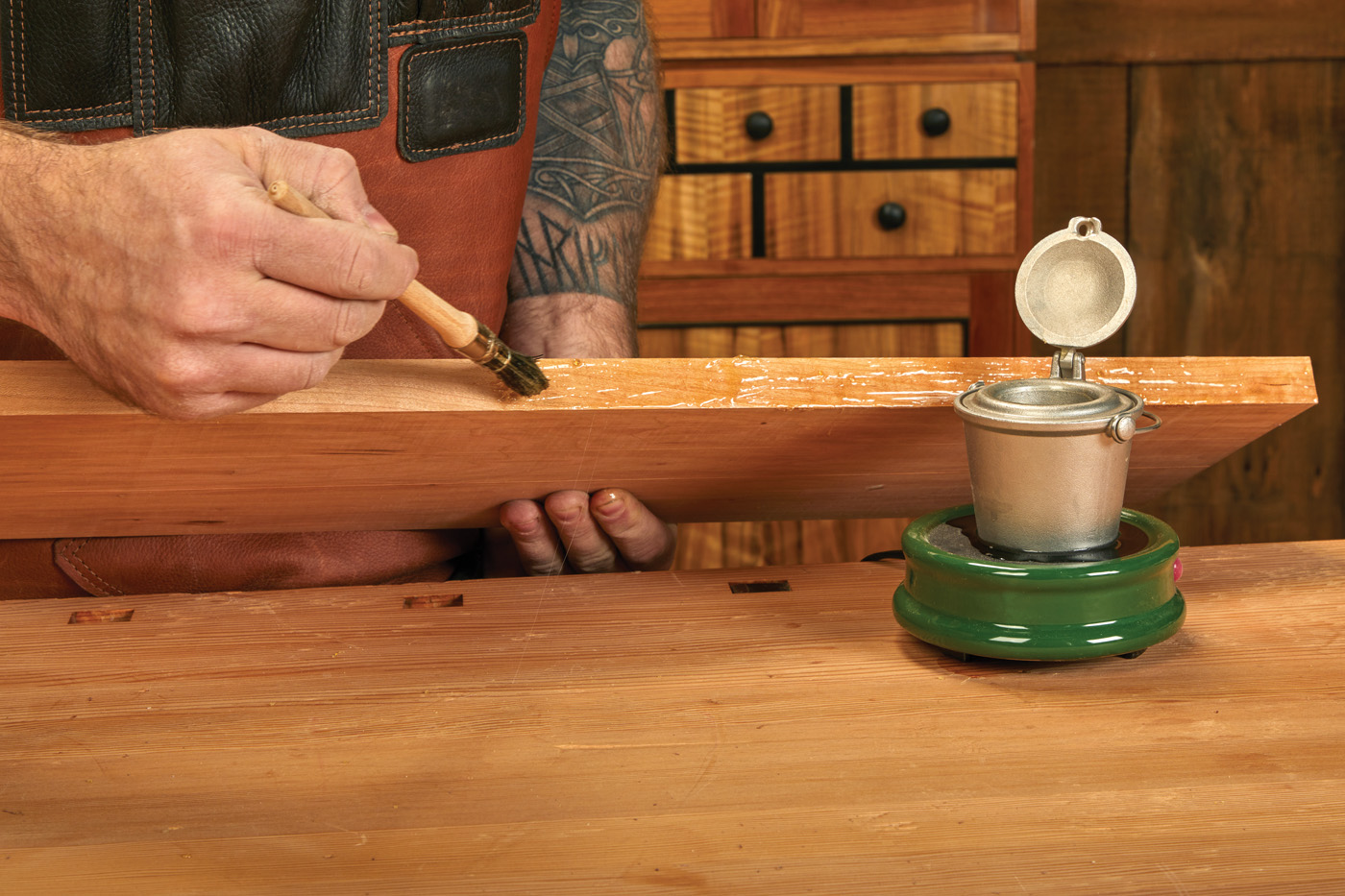We may receive a commission when you use our affiliate links. However, this does not impact our recommendations.
 This traditional glue takes a little bit of preparation and planning, but is still a valuable asset in today’s shop.
This traditional glue takes a little bit of preparation and planning, but is still a valuable asset in today’s shop.
“Ought a turn you to glue.” It was a saying that I heard my great-grandfather tell his mules as he was out working. Roy was a muleskinner — a mule trainer. That phrase was one that I never fully appreciated, or understood until much later in life.
Now, I don’t think today’s hide glue is necessarily made from Grandpa Roy’s mules—but animal protein glue (hide glue) is still made from the left overs from processed cattle. And, while not as popular as it once was, hide glue still has a ton of benefits in the shop—so many that it’s still a go-to choice for a lot of craftsmen in their daily work.
Benefits of Hide Glue
Hide glue, while one of the oldest adhesives known, still has some benefits over modern PVA (yellow) glue. First and foremost, hide glue is reversible. You can add heat and water to a hide glue joint and take it apart. On the same token, you can easily repair an old hide glue joint—simply apply more glue and it will re-wet the original glue. This also makes it extremely easy to clean up—some hot water and a tooth brush will clean up even dried squeeze-out. And, if you’ve ever applied a finish only to find a bright streak of glue across the surface that you didn’t notice— well, hide glue doesn’t do that under most finishes.
 Of course, there’s nothing that doesn’t come with a trade-off. Modern pellet style hide glue (such as you see above) takes a little preparation and planning to use it. In general, you can order glue in different gram-strengths and clarities. The higher the gram strength, the less open time but the stronger the bond. For most everything in the shop, a 192 or 251 gram strength is just fine.
Of course, there’s nothing that doesn’t come with a trade-off. Modern pellet style hide glue (such as you see above) takes a little preparation and planning to use it. In general, you can order glue in different gram-strengths and clarities. The higher the gram strength, the less open time but the stronger the bond. For most everything in the shop, a 192 or 251 gram strength is just fine.

1 Glue is heated in a double boiler with a water jacket around the glue pot.

2 The dry glue is poured in the glue pot.
The hide glue pellets need to be softened with water and heated to dissolve the glue. Many manufacturers used to make glue pots, or you can buy modern double-boiler ones such as you see in this article. The double boiler ones are smaller and perfect for a home shop. To make the glue, you first fill up the double boiler with water, then fill the glue chamber with pellets. The pellets are topped with cold water and allowed to absorb it. Once the water’s been absorbed, the glue will be gelatinous and you can put the pot on the heat. The target temperature for most hide glue is about 140°F. As it heats, the glue will melt down, and you may need to add additional water. The consistency you’re looking for (as a rule of thumb) is a runny syrup. This also means that you need to monitor it as you’re working during the day to keep it at the right consistency (as the water evaporates).

3 Cold water is poured over the glue granules.

4 Cover the top of the glue, and the glue will quickly absorb the water.
When it’s warm, using hide glue is easy. Simply brush it on with a glue brush (such as the hog-hair shown), and then apply clamps. With hide glue, you can often get away without clamps buy rubbing the two parts together until the glue starts to tack up —this is called a “rub joint”. At the end of the day, excess glue should be stored in a fridge until you use it again (though, you’re probably fine overnight).

5 As the glue is heated, it will melt.

6 Add water to keep it at a runny consistency.
Hide glue might not be something that you currently use every day in your shop, but I’d wager once you start to use it, you’ll start using it more and more.
Here are some supplies and tools we find essential in our everyday work around the shop. We may receive a commission from sales referred by our links; however, we have carefully selected these products for their usefulness and quality.



 This traditional glue takes a little bit of preparation and planning, but is still a valuable asset in today’s shop.
This traditional glue takes a little bit of preparation and planning, but is still a valuable asset in today’s shop.




